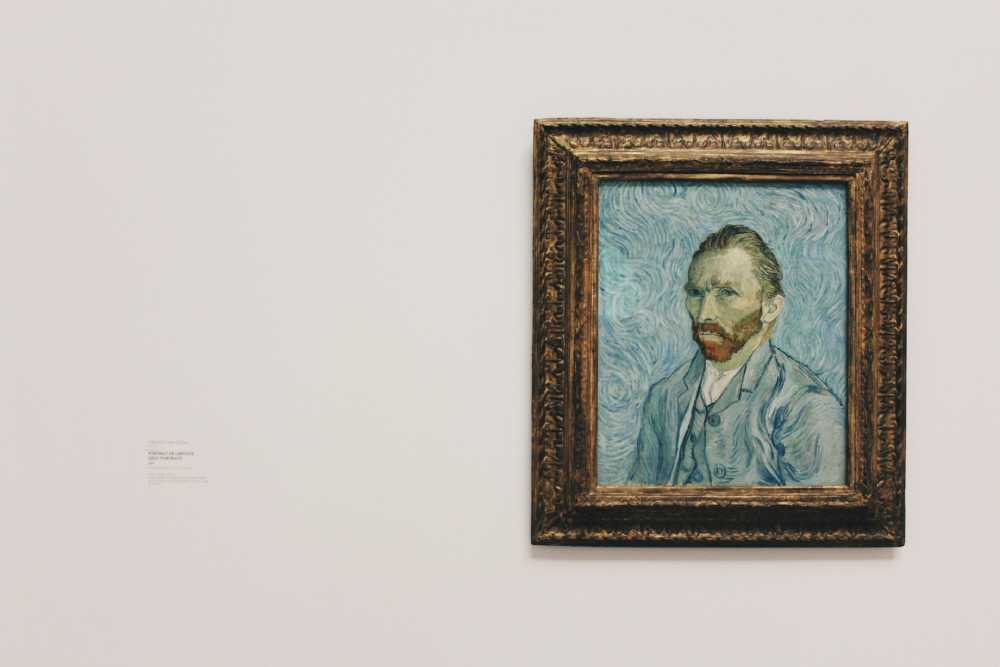Often times defining arts and crafts seems straight forward at first glance. People often pause when asked to categorize handmade items as art or craft. Their hesitation reveals fascinating complexities in society’s view of creative works.
The difference between art and craft might seem obvious initially. A deeper look shows more subtle layers of meaning. Both require creative skills and careful execution, yet each serves unique purposes and stems from different creative approaches. These differences help us appreciate both forms of creative expression better.
As I wrote in this piece about the key differences between art and craft, you’ll find practical ways to identify and explain these variations. The knowledge applies equally to museum paintings and handwoven baskets. The core concepts help develop a deeper understanding of both creative forms.
Contents
- 1 Understanding Basic Definitions
- 2 Key Differences in Purpose
- 3 Examining the Creative Process
- 4 Real-World Examples
- 5 Teaching Others the Distinction
- 6 How to Explain the Difference Between a Piece of Art and a Craft Frequently Asked Questions
- 6.1 What’s the difference between a piece of art and a craft?
- 6.2 What separates the art object from the craft object?
- 6.3 How do you describe arts and crafts?
- 6.4 What distinguishes a craft art object from a fine art object?
- 6.5 Is there no difference between craft and art?
- 6.6 What is the distinction between art and craft is commonly understood as based on?
Understanding Basic Definitions
The difference between art and craft has grown substantially since the Renaissance period. People started drawing clear lines between these creative forms at that time. These definitions help us understand their unique characteristics and shared elements.
Traditional definition of art
Art expresses human creativity and imagination that affects our esthetic or emotional response. Artists began using their medium for personal expression rather than just skilled creation in the 1400s. The traditional definition shows that art pieces convey emotions, ideas, or vision through visual forms like painting, sculpture, or photography.

Traditional definition of craft
Craft focuses on skilled creation of tangible objects that serve specific purposes. Traditional craftsmen use materials found in nature and hand-powered tools to create functional items. These pieces often showcase cultural heritage as masters pass their skills and knowledge to apprentices through generations. Crafts typically focus on creating specific objects with clear functional purposes, whether they’re storage containers, decorative items, or household tools.
Where definitions overlap
The line between art and craft has blurred more and more since the mid-1800s. These creative forms intersect in several ways:
- Both need technical skill and creative thinking
- Each can produce esthetically pleasing results
- Both often reflect cultural values and traditions
- Many pieces combine functional purpose with artistic expression
Craft traditionally creates functional items with specific steps and outcomes. Many craftspeople now add artistic elements to their work. Artists may use traditional craft techniques to create purely expressive pieces. This overlap raises interesting questions about whether these differences still matter in modern creative practice.
These definitions shape how we view creative works today. Traditional craft emphasizes learned skills and reproducible results. Art focuses more on unique expression and emotional effect. Many contemporary creators work in both realms and challenge these historical boundaries.
Key Differences in Purpose
Looking at creative works and understanding their purpose shows clear differences between art and craft. These differences shape how creators do their work and how society values what they make.
Expression vs function
Art’s main goal is personal expression and emotional effect, while craft focuses on making functional objects. Artists create works to share feelings, ideas, or their personal vision without needing a practical purpose. Craft makers focus on making items people can use, such as pottery, textiles, or furniture that serve specific purposes in daily life.
Creative freedom vs technical requirements
Artists have more creative freedom and work from emotion and personal vision. Their work comes from heart and soul, letting them explore unique interpretations and abstract concepts. Craftspeople work within set boundaries and focus on becoming skilled at specific techniques and materials. Both need skill, but craft relies on learned abilities and experience. They follow proven methods to get consistent results.
Value and appreciation factors
Society’s way of valuing art and craft shows complex historical and cultural patterns. Here are the key reasons behind their appreciation:
- Art connects with esthetic and emotional effect, and often sells at higher prices in galleries
- Craft pieces get recognition for their practical value, even though they need advanced technical skill
- History has placed art in “high culture” while linking craft to everyday needs
These traditional differences still affect how people value creative works, but modern views increasingly see artistic merit in well-crafted pieces. The art world now embraces craft techniques and sees that technical mastery and creative expression can work together meaningfully.
Modern creators challenge these old boundaries and make works that show both artistic vision and technical skill. This development shows a better understanding that art and craft serve different main purposes, but both add value to cultural expression and human creativity.
Examining the Creative Process
Artists and craftspeople show key differences in their creative process, yet they share surprising similarities in their work approach. Looking at these approaches helps us understand the difference between art and craft.
How artists approach their work
Most artists start their creative path with an emotional spark or personal vision. Something they see or hear connects with their inner experience and inspires them. Their creative process flows through preparation, incubation, and illumination stages that let ideas grow naturally. They spend time reflecting and experimenting rather than following specific steps.
How craftspeople approach their work
A craftsperson’s work follows a more structured method that focuses on technical skills and specific outcomes. Their process usually includes:
- Material selection and preparation
- Following proven techniques
- Applying learned skills systematically
- Testing and refining methods
Craft production depends on skilled workers who have received intensive training through apprenticeships, workshops, or hands-on experience. Craftspeople must balance technical requirements with creative elements as they work toward a specific, tangible end product.
Similarities in creative thinking
Artists and craftspeople think alike in many ways despite their different approaches. Their creative process stays dynamic and keeps growing, driven by material possibilities and new ideas. Both groups go through similar stages in their creative work:
- Preparation: Gathering ideas and materials
- Incubation: Allowing concepts to develop
- Illumination: Experiencing breakthrough moments
- Verification: Bringing ideas to life
Creativity shows up in all forms of making, not just art. Both groups mix intuition with analysis to create their pieces. Artists might focus more on emotional expression while craftspeople concentrate on technical execution. Yet they both need creative problem-solving and critical thinking skills to bring their ideas to life.
Looking at how each creator works makes the difference between art and craft clearer. Still, their shared creative process shows common patterns of thinking and growth. This explains why some works blur the lines between art and craft, as creators mix technical mastery with personal expression more often.
Real-World Examples
Ground examples help show the subtle differences between art and craft that also reveal fascinating cases where these boundaries blur. Specific pieces provide practical insight into how creators approach their work differently.
Clear examples of art pieces
The art world has many examples of purely expressive works. Vincent van Gogh’s paintings at the Museum of Modern Art show art’s focus on emotional effect rather than function. Picasso’s Guernica stands as one of the most powerful artistic statements of the 20th century that was created to express outrage at war’s brutality. These pieces show how art prioritizes personal vision and emotional connection over practical utility.
Clear examples of craft pieces
Traditional crafts showcase functional creation’s beauty. Indian artisans show this through their centuries-old zari work, where they meticulously weave gold or silver threads into silk fabrics to create intricate patterns. Japanese potters create delicate tea cups and bowls that balance beauty with functionality perfectly. Maharashtra’s Warli paintings represent traditional folk craft that uses simple geometric shapes to decorate village hut walls with cultural significance.
Hybrid examples that blur the lines
Modern creators produce works that challenge the traditional art-craft divide more and more. Several compelling examples show this fusion:
- Liza Lou’s Kitchen (1991-96) needed five years of detailed beadwork to create an artistic statement about domestic labor
- Jordan Nassar combines traditional Palestinian cross-stitch embroidery with contemporary artistic expression
- Diedrick Brackens creates tapestries that tell stories while acknowledging his chosen materials’ historical significance, particularly cotton’s complex legacy
Recommended: Embroidery is an Example of Which Type of Fiber Craft?
The Museum of Modern Art has embraced this progress by displaying works that bridge the divide, including Vincent van Gogh’s pieces among George E. Ohr’s distinctive pottery. This integration shows growing recognition that creative works can serve both artistic and functional purposes while maintaining high levels of craftsmanship.

Amanda Valdez shows this fusion by combining quilting, sewing, weaving, and painting techniques to create abstract works that honor both artistic expression and craft tradition. These pieces challenge viewers to look beyond traditional categories and appreciate the rich possibilities when art and craft meet.
Teaching Others the Distinction
Students need a thoughtful approach to learn the difference between art and craft. Clear communication about these differences helps people appreciate both creative forms better.
Simple explanations for children
Children learn best about art and craft through their purpose. Teachers find that explaining art expresses feelings and ideas, while crafts create useful things works well. This simple difference helps young students learn without confusion about technical details.
Students learn better through hands-on activities that show how art and craft serve different purposes. They can paint their emotions as art, then create a pencil holder as craft. This experience helps them understand the difference naturally.
Addressing common misconceptions
People often misunderstand art and craft in several ways:
- They think all handmade items are craft
- They believe crafts have less value than art
- They assume art must be decorative only
- They think craft needs less creativity
- They believe art can’t be functional
Education experts stress that both art and craft substantially help child development. Crafts develop fine motor skills and teach direction-following. Art activities boost creative expression and emotional growth. These different but complementary benefits show neither form stands above the other.
Using visual demonstrations
Teachers can show the difference between art and craft through clear visual examples:
- Show two similar items – one artistic, one crafted
- Highlight the different creative processes
- Talk about each piece’s purpose
- Compare technical needs versus creative freedom
- Look at materials and techniques used
Students understand the subtle differences between art and craft better when they experience both structured and free activities. This balanced approach lets them try craft projects and artistic expression.
Examples from the ground work best when students can touch and study them. A decorative ceramic sculpture compared to a functional ceramic bowl shows how similar materials serve different purposes. Each needs its own creative approach.
Teachers should give students room to try both art and craft activities. Students develop their understanding of the differences as they build skills in both areas. Through guided practice and direct experience, they start to see what makes art different from craft. They learn to value both forms of creative expression.
How to Explain the Difference Between a Piece of Art and a Craft Frequently Asked Questions
What’s the difference between a piece of art and a craft?
A piece of art is typically regarded as a creation with a primary focus on aesthetic expression or conceptual ideas, often driven by the artist’s emotions, message, or personal interpretation. On the other hand, craft generally refers to functional or decorative objects made with skill and technique, often involving manual labor and focusing on practicality. While both art and craft require creativity, art tends to prioritize personal expression, while craft emphasizes skill and utility.
What separates the art object from the craft object?
The key distinction between an art object and a craft object lies in their purpose and intent. An art object is usually created to evoke thought, emotion, or an intellectual response, often being unique and non-functional. In contrast, a craft object is often made for utilitarian purposes, though it may also be decorative. The craftsmanship of an object may be admired in both cases, but art objects are typically regarded for their conceptual depth, while craft objects are valued for their skill and functionality.
How do you describe arts and crafts?
Arts and crafts refer to activities and objects that involve the creation of handmade or traditionally crafted items. “Arts” typically includes visual art forms like painting, sculpture, and photography, emphasizing artistic expression and creativity. “Crafts” involve creating functional or decorative items like pottery, weaving, woodworking, and textiles, focusing on technical skill and the craftsmanship of the objects. Together, arts and crafts celebrate creativity, design, and hand-made traditions.
What distinguishes a craft art object from a fine art object?
A craft art object is generally created with a focus on functionality and technique, often combining both artistic design and utilitarian purpose. Fine art objects, however, are created with an emphasis on aesthetic value, concept, or expression, typically for display or intellectual engagement rather than everyday use. The distinction lies in the purpose: craft objects often serve a functional role, while fine art objects are primarily intended to be appreciated for their visual or conceptual significance.
Is there no difference between craft and art?
While the boundaries between craft and art can sometimes blur, there are generally accepted distinctions. Art is often associated with individual expression, creativity, and conceptual depth, whereas craft is typically seen as a form of skill-based work that often serves a functional or decorative purpose. However, as perceptions of art evolve, some crafts are increasingly viewed as high art, and vice versa, making the line between the two more fluid.
What is the distinction between art and craft is commonly understood as based on?
The distinction between art and craft is commonly understood to be based on the intended purpose and conceptual depth of the work. Art is generally viewed as focusing on aesthetic and intellectual expression, with an emphasis on creating something unique or thought-provoking. Craft, on the other hand, often emphasizes skill, tradition, and functionality, with many crafted items serving a practical use. These distinctions, however, have become increasingly subjective, and many works blur the lines between the two categories.




